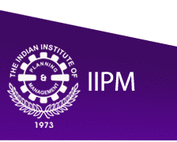Now that consumers have evolved, it’s getting more and more difficult to sustain a brand. here’s what marketers should be doing Even with the best efforts, brands land up in situations which are not best for them. Airlines did not intend to be in the red. Political ideologies are not formed to be overthrown, movies are not made to fail at the box office, and iconic individuals don’t intent to fall from grace. Most of us believe that our brands are infallible, employee cynicism apart. Some brands tread a seemingly successful path yet fail in the marketplace. In the year 2010, it is estimated that over 67% of the products launched globally in five key industries – consumer electronics, non-durables, banking and IT have failed to achieve the estimated level of financial success. How did this happen? The best of minds coupled with the greatest vintage of people, most effective tools and methodologies seem to fail. When movies expected to be blockbusters fail, everyone seems to ask – did the film-maker not see the obvious? In retrospect, everything is obvious and ‘should’ have been intuitive. Why was this not seen before the event occurred or a campaign launched? Is there a risk mitigation plan which brands can formulate so that they do not paint a dirty picture in the future? Possibly. A study of successful as well as failed brands throws up some patterns that brands could identify and avoid. Being too functional/ tactical: In an effort to up the ante on value delivery, brands can make the mistake of being too tactical or reactive. The messaging could almost be like that of a hammer, which says my brand can strike and strike very hard if you want, at anything. What is wrong with that? Are we not supposed to be selling a benefit anyway. True, but an over-repeated and mindless effort to drive home an attractive but narrow functionality can be counterproductive. Functionalities of a brand should go hand in hand with the emotional benefits it can offer. An emotional connect fortifies a long-term connection with customers. Not just that, but future roadmaps for the product are also established with an emotional connect, serving as a bond even when the current functionality is no more a differentiator. Compare Apple with other hardware brands. Most other brands focus on cost, technological superiority, while Apple focuses on design that dazzles customers. Therefore the market has segmented itself as Apple and Others. Does anyone check iPad 2’s specifications? No. Because in the customers’ minds it is above comparison and scrutiny, reflecting a strong bond of trust that the brand has built with the customers. Keeping the brand caged up for too long: In a typical brand journey, there is a phase of maturity. At this stage, the brand seeks to extend, diversify into variants, acquire other brands etc. There are two crucial questions in the brand managers’ minds at this stage: 1.Should the brand seek further growth? 2.At what stage should the brand expand to seek new horizons? These are tough ones to answer! Some brands seek to stay put, convinced that there is no need for the extra effort to grow or that any such attempt is inherently risky. This move might lock up the brand for a significantly longer period of time beyond what the conscience keepers of the brand envisaged. Consider the Indian Railways. For the last 20 years, the largest employer in the world has not expanded beyond being a brand which transports people and goods. Why can’t the Railways recast itself into a great services brand? The vacation and leisure market in India has expanded 17 times in the last 10 years. Why is Indian Railways not seeking to be the best holidays brand given it’s omnipresence across the country and access to all the tourism development departments? Guess the answer to this is that the brand managers of Indian Railway have caged up the brand and locked it into a corner by saying “we are Indian Railways and we will have metal coaches running on metal tracks.” Trap of mundane products: Great brands grow by earning revenues and profits from newer products which take current footprints to newer opportunities. But some brands, very curiously, seem to prefer launching products in saturated markets. One obvious reason for this is that matured markets offer stability and predictability and the ‘guaranteed’ 3% growth. But this can affect the brand’s body language significantly. For instance, LG, a manufacturer of electronic consumer durables launched a series of products in the consumer goods market, while its competitor Samsung was working on innovating LCD TVs and next generation tablets. Why was LG trying to chase product lines which were facing saturations for more than two decades? Does LG have the brand equity in the Indian market to be able to successfully market these products? Not sure. Not investing in innovation: This is linked to the pitfall mentioned above. When brands cannot or have not invested in innovation, they gravitate to playing the price game, constantly slashing the prices of their products. Discounts, freebies and constant price-led promotions only convey to the consumers – “I am cheap”. A case in point is the Indian mobile telephone market. While brands like Samsung and Nokia were investing in innovating on the product, most domestic brands were focusing on reducing the cost and thereby the price of their offerings. While the temptation to tap into the sub-Rs.3000 market is obvious, a point to ponder will be – where does the brand create a surplus to add new features, new designs? An enhanced feature today is a must-have tomorrow. Touch screen phones are typical examples of this. Following competition: Industry benchmarking is good as long it helps contextualise business performance. But a feature by feature comparison and consequent ‘reverse’ engineering efforts, are nothing but blindly following the competition. Very rarely, can a brand exactly replicate what works for another brand. Each brand has its unique DNA which can rarely be copied. Secondly, even if this is achieved, customers rarely embrace followers. In the Indian IT industry, Infosys always positioned itself as an industry leader, pioneering path breaking corporate governance measures, unique employee engagement activities and purposeful PR. The clear advantage for Infosys was its ability to always command a price premium over the competition. For more articles, Click on IIPM ArticleSource : IIPM Editorial, 2013 An Initiative of IIPM, Malay Chaudhuri and Arindam chaudhuri ( Renowned Management Guru and Economist). For More IIPM Info, Visit below mentioned LinksSC slams AICTE's illicit control on MBA coursesMBA, MCA courses no longer under AICTE 2012 : DNA National B-School Survey 2012
Ranked 1st in International Exposure (ahead of all the IIMs)
Ranked 6th OverallZee Business Best B-School Survey 2012 Prof. Arindam Chaudhuri’s Session at IMA IndoreIIPM IN FINANCIAL TIMES, UK. FEATURE OF THE WEEK IIPM strong hold on Placement : 10000 Students Placed in last 5 yearIIPM’s Management Consulting Arm-Planman ConsultingProfessor Arindam Chaudhuri – A Man For The Society….IIPM: Indian Institute of Planning and ManagementIIPM makes business education truly global
Management Guru Arindam Chaudhuri
Rajita Chaudhuri-The New Age Woman
IIPM B-School Facebook Page
IIPM Global Exposure
IIPM Best B School India
IIPM B-School Detail IIPM LinksIIPM : The B-School with a Human Face-----------------------------------------------------------------------------------------------------------------
An Ad is a product of painstaking craftsmanship. Various elements, ranging from positioning of the product, clarity of the idea behind the product to visibility of the brand, its persona and the power of communication have to be intelligently weaved together. But while some ads manage to rewrite preset creative benchmarks, some go the wrong way, fall by the side & fail to excite viewers. In this section, we review three Ads that came out tops, for the right and the wrong reasons this fortnight.
smart-asses or cheaters?
Advertiser: Pepsi IndiaBaseline: Mauke Pe ChaukaAgency: JWT4Ps B&M Take: Pepsi has come up with a new twist to its ‘Change the Game’ brand campaign this summer and they are calling it ‘Mauke Pe Chauka’. This time they have introduced a football based TVC for the first time in India. But the cricket is not far behind - with Dhoni, Virat Kohli, Suresh Raina and Harbhajan Singh playing ‘stars’ in this film yet again against Chelsea’s Didier Drogba, Fernando Torres and Frank Lampard. So the three footballers enter the grounds and one of them picks up a bottle of Pepsi. Kohli, Bhajji and Raina – who are sitting poised as if to guard every bottle – take back the bottle saying that if the Chelsea guys want Pepsi, they had better play ‘our’ game – obviously cricket. Then ensues some amazing footwork by Drogba, Torres and Lampard – who volley the ball towards the stump and eventually dismiss Kohli. But Dhoni – who plays wicket keeper – suddenly raises his head and says ‘No Ball’. Of course, the footballers are flummoxed and ask him the meaning of the term. Dhoni says: ‘No ball, means no Pepsi’ and the cricketers burst out laughing. Why? Please don’t ask us. The challenge apparently was for the footballers to play the game – and not win it – in order to earn the Pepsi. And if the cricketers were supposed to look smart for tricking the Chelsea players out of their bottle of Pepsi – they didn’t! This is not to say that the ad itself is a washout. It’s not. Leave the cut and paste job that comes out (clearly, Drogba, Torres and Lampard’s scenes were shot somewhere else and pasted on the Indian scenes), it’s a nice attempt at combining two sports (and respective celebrities) that the Indian youth may idolize. In other words, if only brand recall was the objective of Pepsi, then they’ll more or less succeed in their attempt if the ad is repeated ad nauseum. For everything else, there’s Mastercard... Compare at your own risk
Advertiser: Nokia LumiaBaseline: Blown Away by Lumia4Ps B&M Take: Nokia seems to be running out of ideas to promote its new Lumia smartphone. In the latest campaign, an all dolled up Priyanka Chopra throws a challenge to another girl to verify if there is any smartphone which can compete with her Nokia Lumia 800 and win. The race is to update the word ‘challenge’ on both Facebook and Twitter simultaneously to establish which of their smartphones upload faster. But come on. Does it really matter? If you are habituated to your phone, have good connectivity and quality apps – any smartphone can do that job for you. Anyway, the girl obviously comes in second with Piggy Chops beating her to the task on hand. QED: Nokia Lumia 800 is ‘faster’ than any other smartphone in the world. Even the storyboard is a throwback to the ‘Surf ki kharidari mein hi samajdhari hai’ Lalitaji days. Hardly smacks of any ingenious bursts of creativity. Comparative advertising is good. It has also worked well for some brands in the past. Remember Complan and Horlics, Rin and Tide? But wake up guys. This is the 21st century. 24x7 influx of media has made consumers so cynical that they even read ‘’news’ with a pinch of salt. Blatantly comparative ads like this one may get you the temporary eyeballs – perhaps even a few ‘lucky’ trial consumers – but they’re not going to ever get you frenzied sales of the iPhone variety. For more articles, Click on IIPM ArticleSource : IIPM Editorial, 2012 An Initiative of IIPM, Malay Chaudhuri and Arindam chaudhuri ( Renowned Management Guru and Economist). For More IIPM Info, Visit below mentioned IIPM articles.
IIPM ranked No 1 B-School in India
domain-b.com : IIPM ranked ahead of IIMs
IIPM: Management Education India
Prof. Rajita Chaudhuri's Website
IIPM in sync with the best of the business world.......
Arindam Chaudhuri on Internet.....
Arindam Chaudhuri: We need Hazare's leadership
Professor Arindam Chaudhuri - A Man For The Society....
IIPM: Indian Institute of Planning and Management
Planman Technologies
IIPM Contact Info
IIPM History
IIPM Think Tank
IIPM Infrastructure
IIPM Info
IIPM: Selection Process
IIPM: Research and Publications
IIPM MBA Institute India
IIPM Best B School India--------------------------------------------------------------------------------------------------------------------------
Movies Now has Created Ripples in The English Movie Channel space with its HD Offering in a Fairly Short Span of Time. Can it Sustain this Iconic Rise?
 Even discounting the impact of translations, Hollywood has gained immense popularity in certain parts of India. Indeed, English movie channels have played a key role in bringing about that transformation. But unlike the upheaval that the box office typically goes through every week, the English movie channel space in India has seen fairly little flux in terms of competitive positions for quite a while. Star Movies has been heading the genre since years; with HBO at a comfortable number 2 and Sony Pix at number 3. Expat entrant WB and the others contenders like Zee Studio, UTV World Movies and Lumiere have remained specific to their content and positioning, by not catering to the mass market. The competition has drastically increased for local broadcasters with multinationals tying up with local broadcasters to cater to niche categories, which mostly directs towards the core audience of 15-35 SEC AB M/F. Ad rates have seen a constant increase over the years, with major revenue earnings for broadcasters. 2010 has also been a virtual walkover for the English movie channel category, with Star Movies ruling the roost (refer to ‘Wars on the English front’, 4Ps Volume 5 Issue -13, July 2-15, 2010). However, the streak recently broke in January, when the TAM research report revealed that a new entrant has suddenly topped the segment within 4 weeks of its launch and dethroned Star Movies. This challenger is Movies Now, a baby of the Times Group, which, in a short span of time, is already showing the muscle to change the game in the English movie channel genre. Movies Now was launched in the second week of December by Times Television Networks, with the clear USP of ‘Hollywood in HD’. Sunil Lulla, MD & CEO, Times Television Network, comments, “Movies Now challenges the status quo of the category to ensure the audience the best of entertainment. With its first of a kind, state-of-the-art HD Broadcast facility. Movies Now will furnish upscale Indian audiences with clearer, crisper picture quality, superlative sound quality and a wider viewing experience.” Movies Now is the 4th offering from the Times Group after Times Now, ET NOW, & ZOOM, which cater to multiple audiences in Australia, Maldives, Kenya, Nepal, Tanzania & Uganda, besides India. Company sources say that the average TSV on the channel is 58 minutes, while the closest competition records an average TSV of 32 minutes. The average GRP of Movies Now is 26 points, which is the highest in the category. (Source: TAM Media Research, TG: CS 15-34 AB, Period: 4 weeks average of week 52, 2010-week 03, 2011; Markets: Top 8 Metros). For more articles, Click on IIPM ArticleSource : IIPM Editorial, 2011. An Initiative of IIPM, Malay Chaudhuri and Arindam chaudhuri ( Renowned Management Guru and Economist). For More IIPM Info, Visit below mentioned IIPM articles.IIPM ranked No 1 B-School in India
domain-b.com : IIPM ranked ahead of IIMs
IIPM: Management Education India
Prof. Rajita Chaudhuri's WebsiteIIPM in sync with the best of the business world.......Arindam Chaudhuri on Internet.....Arindam Chaudhuri: We need Hazare's leadershipProfessor Arindam Chaudhuri - A Man For The Society....IIPM: Indian Institute of Planning and Management--------------------------------------------------------------------------------------------------------------------------
|



 RSS Feed
RSS Feed